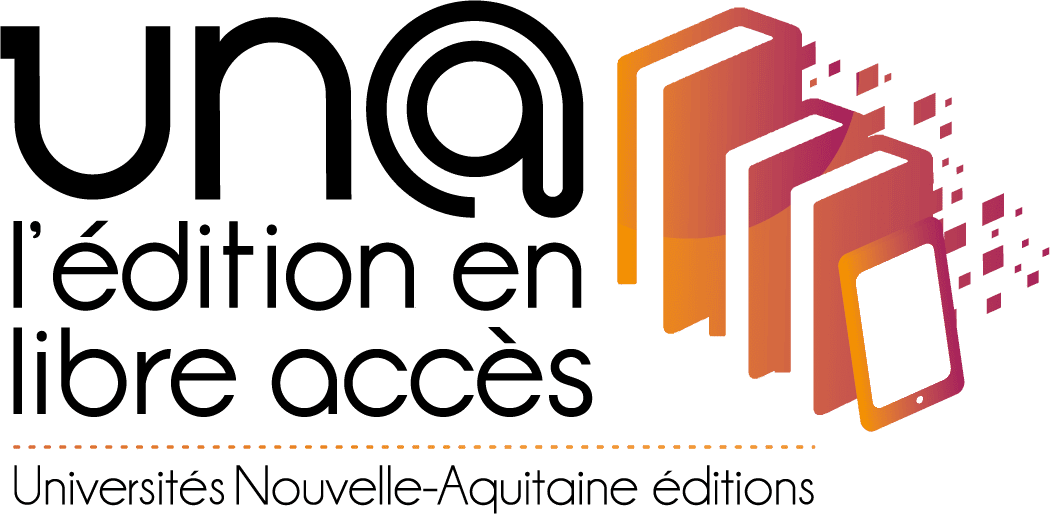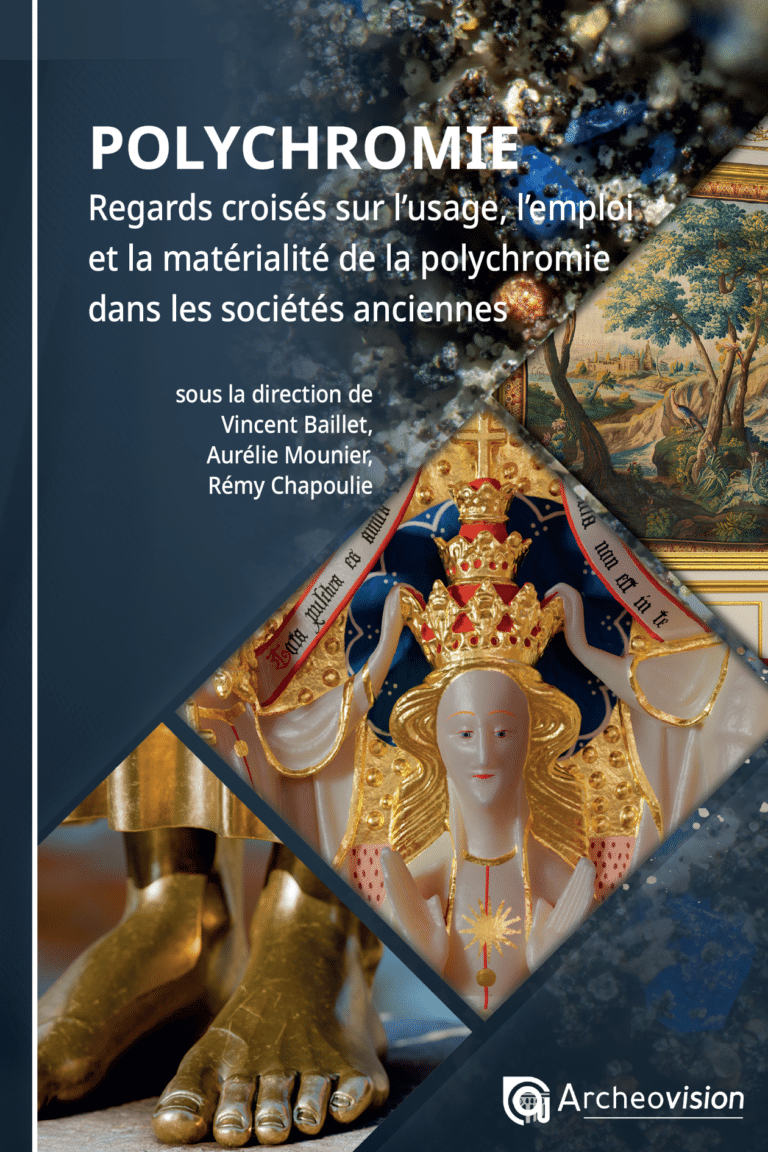Introduction
When one approaches the subject of 18th century colours, the common thought is immediately oriented towards pastel or even dull colours. Tapestries from this period are no exception to the rule. However, current research tends to show that the dyes of the time were in fact bright and contrasting. This study, part of a PhD thesis1, aims to analyse a selection of 18th century Aubusson high-quality tapestries, i.e. Grand Teint, using a multidisciplinary, non-invasive approach. The objective is to develop a contactless methodology to examine textiles, dyes, and mordants while preserving these fragile cultural heritage objects. By integrating historical documentation with advanced analytical techniques, this research seeks to enhance our understanding of traditional dyeing techniques and the long-term degradation of materials.
Analysis methodology
Tapestries are complex structures composed of three key elements: textile fibres, mordants, and dyes. The textiles, made of wool or silk, are treated with mordants–metallic salts–that allow the dyes to adhere. These three components interact chemically, influencing the overall stability and appearance of the tapestries over time.
To develop a robust and non-destructive analytical methodology, the research was conducted in three key stages described in figure 1 and in De La Codre2. To identify the materials used in Aubusson’s tapestries, the first step involved creating a colour chart of textile samples dyed according to 18th century recipes documented in historical dyers’ treatises and the archives of manufactories. This chart provided a benchmark for studying how different dyes, fibres, and mordants interact and degrade over time. The dyes were applied under controlled conditions to wool and silk textiles, enabling a detailed comparison between newly dyed samples and aged tapestries.
The second phase of the research focused on developing and applying non-invasive analytical techniques to study the tapestries. This methodology thus relied on spectroscopic techniques that analyse the interaction of light with the tapestry’s surface, allowing for large-scale analysis without physical contact. Punctual analysis through fibre optic reflectance spectroscopy (FORS) in both the visible and infrared ranges, as well as microspectrofluorimetry (LED-µSF), was employed to determine the absorption properties and fluorescence properties of dyes and textiles used. The detection of metal-based mordants was achieved using portable X-ray fluorescence spectroscopy (p-XRF). HyperSpectral Imaging (HSI) was instrumental in mapping the distribution of different fibres and dyes across large textile surfaces. This technique, which enables swift and efficient analysis, provides more representative results across the entire tapestry. However, it required determining the optimal method for data processing.
The third phase of the project also involved the simultaneous study of dye degradation. Artificial aging and degradation experiments were conducted to assess the long-term stability of the dyes. Samples from the reference dye chart were subjected to controlled exposure to xenon light to simulate the effects of prolonged light exposure, while others were placed under natural light to observe real environmental aging. Samples were then analysed using spectrocolorimetry, LED-µSF and FORS to observe colour changes as well as shifts in wavelengths within the spectra.
Finally, the last phase of the project involved applying the knowledge gained from the study of the colour chart to historical tapestries.
Material characterization and results on historical tapestry
In Grand Teint tapestries, only two textiles are authorised for weaving the weft: wool and silk. The reflectance spectra in the infrared range of these two protein-based materials show distinct absorption bands due to structural differences in their proteins, specific to either wool or silk. These spectral characteristics were leveraged using HyperSpectral Imaging. To achieve this, a false-colour hyperspectral image of the textile reference chart was reconstructed to reflect its appearance to the human eye. The RGB channels were then mapped to absorption bands specific to silk, enhancing the contrast between the two textiles. When applied to the Grande Verdure tapestry (fig. 2a), this methodology enabled clear differentiation: wool appears green, while silk appears white in false-colour images as shown in figure 2b. This approach allows for the spatial mapping of textile distribution across the tapestry, providing critical insights into the association between textile types and dye colours on large surfaces–an analysis that would not be feasible through localized sampling alone. The precise mapping of fibres revealed that silk was primarily used for light-coloured areas (beige, ivory, yellow), while wool was preferred for darker tones (blue, red, green). Notably, the sky, a significant portion of the tapestry, was woven in silk, reflecting a luxurious choice. However, the use of silk was minimised elsewhere, likely due to its high cost.
The study then focused on the identification of mordants. Since mordants are metallic salts, p-XRF was selected as a primary analytical method and first tested on the reference samples and appeared efficient to detect elements linked to mordant such as aluminium, iron or tin. Additionally, the absorption spectra in the SWIR range were analysed to identify potential correlations between absorption bands and the presence of mordants. These findings were further explored using false-colour HyperSpectral Imaging (HSI) by mapping RGB channels to specific absorption bands between 1000 and 1400 nm. In the FC imaging figure 2c, iron was detected in all areas that appeared brown. This suggests that HSI could be used as a tool to indicate the presence of iron mordants3 in addition to the use of p-XRF.
To identify dyes, HSI was applied to the colour chart samples to extract characteristic spectral signatures. However, due to the complexity of spectral responses–affected by fibre type, dye concentration, and mordant interaction–a more refined data processing strategy was required. When identifying dyes in historical tapestries, this study demonstrated that using an internal database is more effective than relying on an external one4. An external database consists of reference spectra from samples independent of the artwork, such as a recreated historical dye chart. However, this approach can introduce inaccuracies due to differences in the aging process, surface contamination, and fibre structure variations between reference samples and the artwork. In contrast, an internal database extracts reference spectra directly from the tapestry itself, allowing for more precise mapping of materials. This internal database was extracted using a specific tool and subsequently processed with the Spectral Angle Mapper (SAM) algorithm to map the dyes. This algorithm is a widely used supervised classification technique for spectral analysis. It compares the angular difference between each spectrum in a hyperspectral image and a reference spectrum, treating each as an n-dimensional vector. The smaller the angular difference, the greater the similarity between the artwork and reference spectra. This method enables the generation of detailed material distribution maps by assigning colour codes to different spectral groups. This methodology provided more reliable and artefact-specific material identification, ensuring that spectral mapping accurately reflected the actual composition of the artwork rather than being affected by inconsistencies in external references. This is demonstrated in figure 2d where each pixel’s colour is associated with a specific reflectance spectrum, allowing for dye identification.
Fading of dyes
This study also investigated the degradation of indigo dyes in 18th century French tapestries from the Gobelins and Aubusson manufactories. These results have been fully published in De La Codre5. Indigo, a key component in producing blue, green, and purple hues, has traditionally been considered a highly stable dye. However, colour changes observed in historical tapestries have raised questions about their long-term lightfastness, particularly on different textile materials.
Using the same non-invasive techniques previously applied to historical tapestries to identify the materials used, colour degradation in original tapestries and on reference samples dyed with indigo and weld was measured. The study reveals that indigo on silk degrades significantly faster than on wool, leading to shifts on reflectance and LED-µSF spectra. This colour fading causes the green areas dyed on silk to turn yellow over time. However, for the green areas dyed on wool, indigo appeared to be indeed very stable, inducing those areas to turn blue due to the well-known fading of yellow dyes. Additionally, light exposure experiments, both under natural and artificial conditions, confirmed the instability of indigo on silk and weld on silk
These analyses and our reflections on the colours were applied to a tapestry held by the Cité Internationale de la Tapisserie in Aubusson, i.e. the Grande Verdure aux Armes du Comte de Brühl, a high-quality piece. The lining of the reverse side of this object has been removed for restoration, giving us a great opportunity to study it from both sides to measure the loss of colours.
Ultimately, this research aids in a digital restoration of tapestry colours, offering a hypothetical visualisation of their original appearance. The results of this digital restoration are visible on figure 2, where e) shows the current state of a detail of the tapestry and f) the same detail where the blue, yellow and green hues have been recoloured6. The digital restitution of the colours of this tapestry calls into question the vision that we had until then of the 18th century colours, but also the aesthetic choices made in spite of the rapid degradation. This study thus raises the question of the priority interest of the manufactures in the 18th century, namely an immediate quality of colour (at the exit of the workshop) and thus an aesthetic choice, a perennial rendering in time or a choice of materials made with awareness of their degradation and evolution in the course of time.
Following the research symposium “Les Couleurs retrouvées des Tapisseries d’Aubusson” in 2022, a book detailing the complete study of the Grande Verdure has been published]7. This methodology of analysis and the results are developed over the course of three chapters8.

Acknowledgements
This PhD thesis was part of a broader project “AUBUSSON. Les couleurs retrouvées des tapisseries fines d’Aubusson (XVIIIe s.). Culture matérielle: conception, production, caractérisation, altération et conservation” which ran from 2019 to 2024 under the leadership of Aurélie Mounier and was supported by the Nouvelle-Aquitaine Region. The authors would also like to acknowledge that La Cité Internationale de la Tapisserie generously granted access to its collections, enabling the study of historical tapestries and Archeovision plateform who played a crucial role in the digital reconstruction of the original colours, further enriching the research. Finally, this research benefited from the scientific framework of the University of Bordeaux’s IdEx “Investments for the Future” program / GPR “Human Past”.
References
Archeovision Production (2024): Aubusson, les couleurs retrouvées. [en ligne]. URL: [http://archeovision-intranet.u-bordeaux-montaigne.fr/demo/Aubusson/projet.html]
Bertrand, P.-F. (2025): Arts et Sciences. Les couleurs retrouvées des tapisseries d’Aubusson, Turnhout.
De La Codre, H., Daniel, F., Chapoulie, R., Servant, L. and Mounier, A. (2021a): “Investigating the materials used in eighteenth century tapestries from the three French Royal Manufactories: inputs of hyperspectral approaches”, The European Physical Journal Plus, 136. [https://doi.org/10.1140/epjp/s13360-021-02184-3]
De La Codre, H., Marembert, C., Claisse, P., Daniel, F., Chapoulie, R., Servant, L. and Mounier, A. (2021b): “Non-invasive characterization of yellow dyes in tapestries of the 18th century: Influence of composition on degradation”, Color Research & Application, 46, 613-622.
De La Codre, H. (2023a): Textiles et colorants des tapisseries: développement d’une méthodologie d’analyse sans contact. Le cas des tapisseries finess dites “Verdure” d’Aubussonn PhD thesis, Bordeaux Montaigne University, Pessac.
De La Codre, H., Aupetit, C., Chapoulie, R., Servant, L and Mounier, A. (2023b): “Lightfastness of Blue Indigo in 18th century French Tapestries”, Dyes in History and archaeology, 37/40, 131-142.
De La Codre, H., Daniel, F., Marembert, C., Servant, L., Chapoulie, R. and Mounier, A. (2025a): “Étude physico-chimique des tapisseries du XVIIIe siècle. Mise en place d’une méthodologie non invasive adaptée aux tapisseries”, in: Bertrand, F.: Art et Sciences. Les couleurs retrouvées des tapisseries d’Aubusson, Turnhout.
De La Codre, H., Daniel, F., Bertrand, P.-F., Servant, L., Chapoulie, R. and Mounier, A. (2025b): “Étude physico-chimique de la Grande verdure aux armes du comte de Brüh”, in: Bertrand, F.: Art et Sciences. Les couleurs retrouvées des tapisseries d’Aubusson, Turnhout.
De La Codre, H., Bertrand, P.-F., Daniel, F., Servant, L., Chapoulie, R. and Mounier, A. (2025c): “Étude comparative des matériaux et des colorants dans les manufactures royales de tapisserie (Gobelins, Beauvais et Aubusson)”, in: Bertrand, F.: Art et Sciences. Les couleurs retrouvées des tapisseries d’Aubusson, Turnhout.
Footnotes
- De La Codre 2023a.
- De La Codre 2023a ; De La Codre et al. 2025a.
- Additionally, the mapping of these zones revealed a systematic presence of iron in brown and beige hues across the tapestry rising the hypothesis, developed in De La Codre 2023a, that those RGB channels could be correlated to the use of tannins. This finding suggests that dyers frequently used iron mordants in tannin-based dye recipes.
- De La Codre et al. 2021a ; De La Codre 2023a.
- De La Codre et al. 2021b, 613-622; De La Codre et al. 2023b, 131-142.
- Archeovision Production 2024.
- Bertrand 2025.
- De La Codre et al. 2025a; De La Codre et al. 2025b; De La Codre et al. 2025c.





